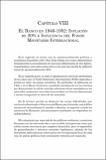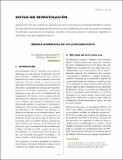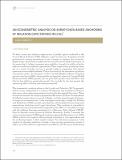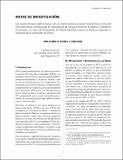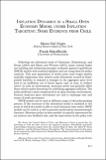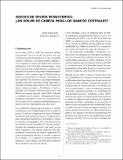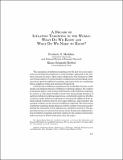Buscar
Mostrando ítems 11-20 de 36
El Banco en 1946-1952: inflación de 20% e influencia del Fondo Monetario Internacional
Este capítulo se inicia con la contextualización política y económica del período 1946-1952. Esta última tuvo como característica fundamental la consolidación de una tasa inflacionaria de dos dígitos registrándose siete años consecutivos con una tasa media de inflación anual de aproximadamente 20%. ...
Medidas alternativas de inflación subyacente
El seguimiento de la tendencia inflacionaria subyacente de corto plazo es un elemento relevante para el diseño e implementación de la política monetaria en el marco de un esquema de metas de inflación. Por esta razón, la construcción de indicadores de inflación que representen la tendencia de la serie, ...
An econometric analysis on survey-data-based anchoring of inflation expectations in Chile
To what extent are inflation expectations of public agents anchored to the Central Bank of Chile’s (CBC) inflation target? In this note, I perform several econometric testing procedures in an attempt to answer this question. Expectations’ anchoring is understood as another central bank instrument, in ...
Inflación de bienes y servicios
El INE publica habitualmente una descomposición de la serie de IPC entre bienes transables (IPCT) y no transables (IPCN). En los primeros meses del 2007 se produjo una discrepancia —al parecer, inusual— entre las tasas de inflación de estos dos componentes. Este documento tiene por fin mejorar la ...
Inflation dynamics in a small open economy model under inflation targeting: some evidence from Chile
Following the influential work of Christiano, Eichenbaum, and Evans (2005) and Smets and Wouters (2003), many central banks are building and estimating dynamic stochastic general equilibrium (DSGE) models with nominal rigidities and are using them for policy analysis. This new generation of sticky ...
Inflation targeting in financially stable economies: has it been flexible enough?
The international financial crisis and Great Recession of 2008- 09 called for a range of significant policy measures by central banks beyond aggressive interest rate cuts. Measures have ranged from improving international coordination to purchasing local private loan portfolios and direct intervention ...
International aspects of the zero lower bound constraint
Large negative aggregate demand shocks can drive down an economy’s equilibrium real interest rate and if the central bank is committed to stabilizing inflation monetary policy may be hampered by the zero lower bound on nominal interest rates –the economy may be in a 'liquidity trap.' The policy dilemma ...
Sterilized foreign exchange interventions under inflation targeting
Inflation targeting needs exchange rate flexibility. If the policy interest rate is geared to achieving the inflation target the central bank must be willing to accept the resulting exchange rate. Simply put if the central bank has both an inflation target and an exchange rate target the private sector ...
Shocks de oferta persistentes: ¿un dolor de cabeza para los bancos centrales?
Entre los años 2007 y 2008, la economía Chilena experimentó severos shocks de costos (aumentos de los precios internacionales de los productos básicos, incrementos del costo de la energía, sequías), los que fueron más persistentes de lo que se pensaba cuando se iniciaron y llevaron la tasa de inflación ...
A decade of inflation targeting in the world: what do we know and what do we need to know?
The emergence of inflation targeting over the last ten years represents an exciting development in central banks' approach to the conduct of monetary policy. After initial adoption by New Zealand in 1990, a growing number of central banks in industrial and emerging economies have opted for inflation ...

